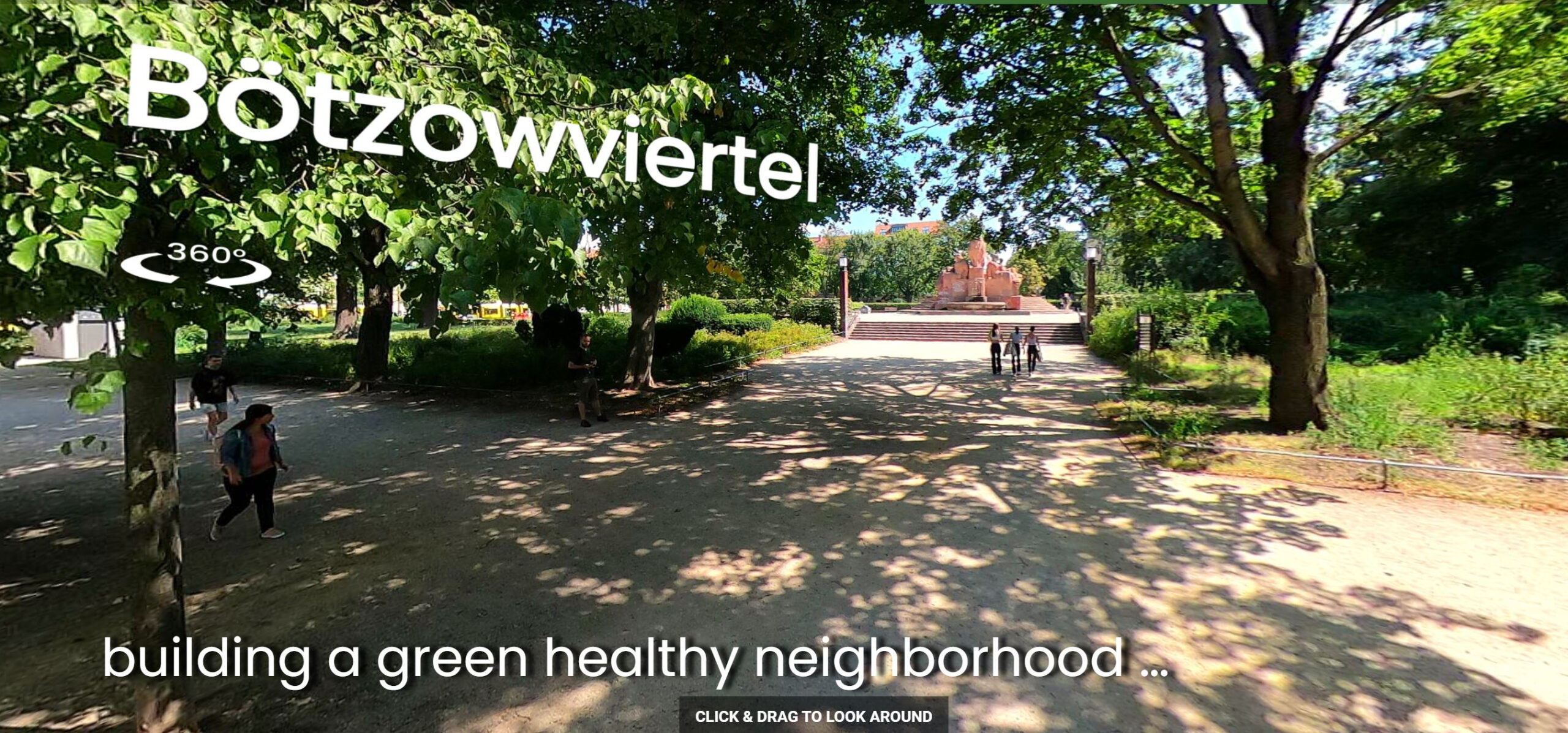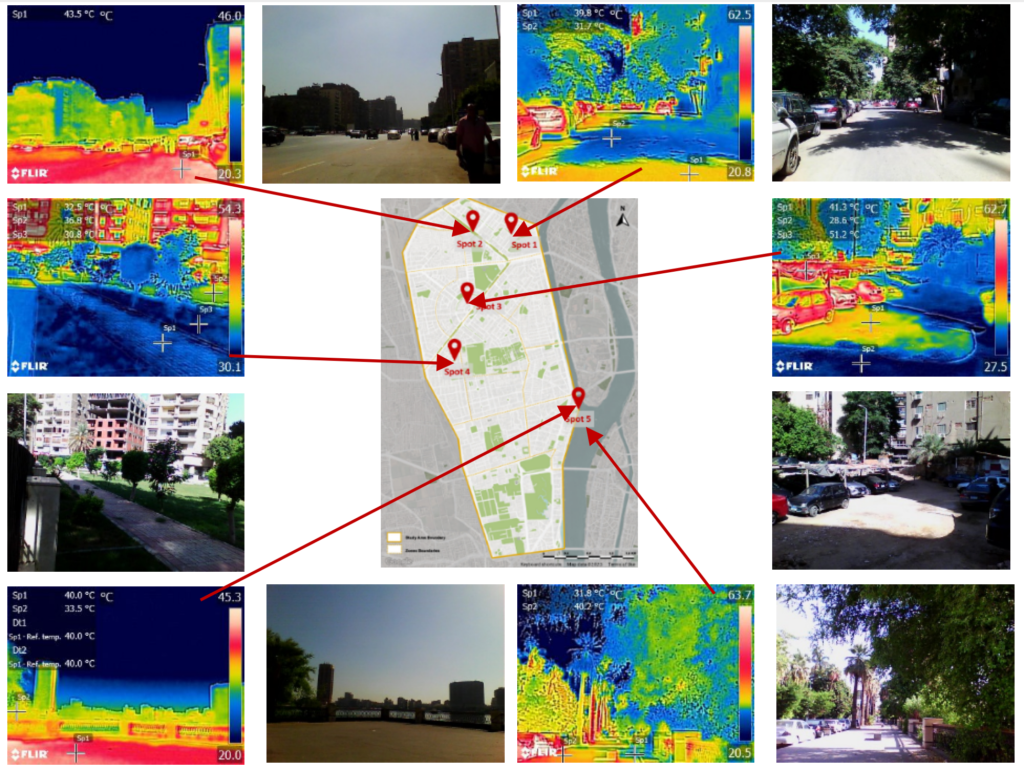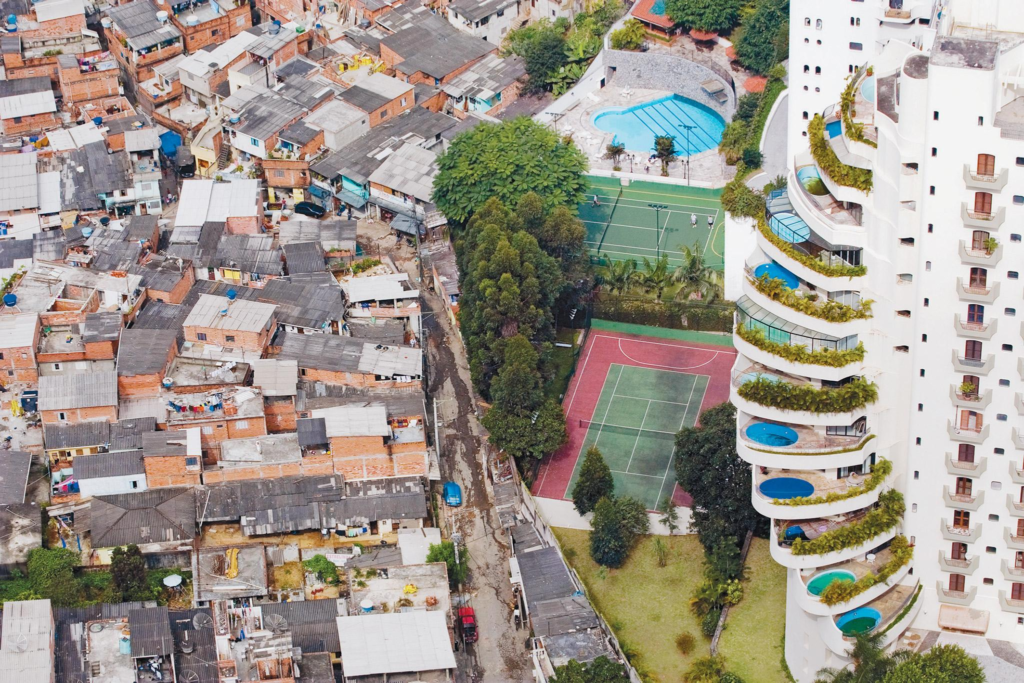Case Studies

Case Context and Problem
Berlin’s urban neighborhoods, or Kieze, face challenges including heavy traffic, fragmented sidewalks, and car-dominated streetscapes. These issues disproportionately affect vulnerable groups like children, the elderly, and people with disabilities. The city also experiences environmental threats such as urban heat islands, rainwater runoff, and biodiversity loss, exacerbated by extensive impervious surfaces. This case focuses on Bötzowviertel, where pedestrian loops are proposed to connect key destinations like schools, medical offices, and parks, improving both mobility and environmental quality.
Spatial Interventions Objectives
The UrbanCare Berlin project aims to:
Methodology
Using GIS tools, priority destinations were mapped within a 1 km radius of public transit stops. Demographic studies estimated the gait speed of slower groups to plan pedestrian loops. Field research included:
Key Results and Lessons Learned
The study highlighted significant barriers to walkability, including disconnected pathways and poorly designed crossings. Heat spots with surface temperatures exceeding 50°C were identified at bus stops and sidewalks, emphasizing the need for shaded areas. Rainwater runoff analyses revealed excessive impervious surfaces, while biotope ratio calculations indicated insufficient green space for biodiversity. These findings underscore the importance of integrating pedestrian-friendly and climate-resilient design into Berlin’s neighborhoods.
Limitations
The study faced limitations in engaging all stakeholders due to time constraints and lacked long-term data to evaluate the impact of proposed interventions. Budgetary and administrative challenges delayed implementation.
Implications for Practice
This case demonstrates the value of pedestrian-first planning for improving urban health and climate resilience. It provides a replicable framework for cities to integrate GIS-based analysis, community engagement, and climate-adaptive design in neighborhood retrofits.
Visual Evidence
Conclusion
This case study documents the UrbanCare methodology applied to Berlin’s Bötzowviertel neighborhood, from identifying spatial inequities to proposing pedestrian loops. It highlights environmental diagnostics, including thermal and runoff analyses, and offers actionable solutions for creating walkable, climate-adaptive streetscapes.
Learn more about this case here: https://www.buildinghealth.eu/a-healthy-neighborhood-in-berlin/
Contributors
Research: Alvaro Valera Sosa (Building Health Lab)
Contributors: Netra Naik and Anna Au from Building Health Lab
Related posts

This study on Greater Cairo Region, Egypt, addresses urban challenges through “urban micro-lungs.” It explores designing green corridors responsive to local climate and space constraints, emphasizing resilient, public health-focused interventions for hyper-dense cities in the Global South.

A Brazilian study, in Sao Paulo, Brazil, showed important changes in built environments for physical activity, highlighting these chances across different regions of the city,

This work unveils the heterogeneous preferences of different hospital users for green infrastructure improvements that could improve their health and wellbeing. Moreover, it shows that distinct motivations determine their demand for spending time outdoors and their willingness to pay for these improvements.